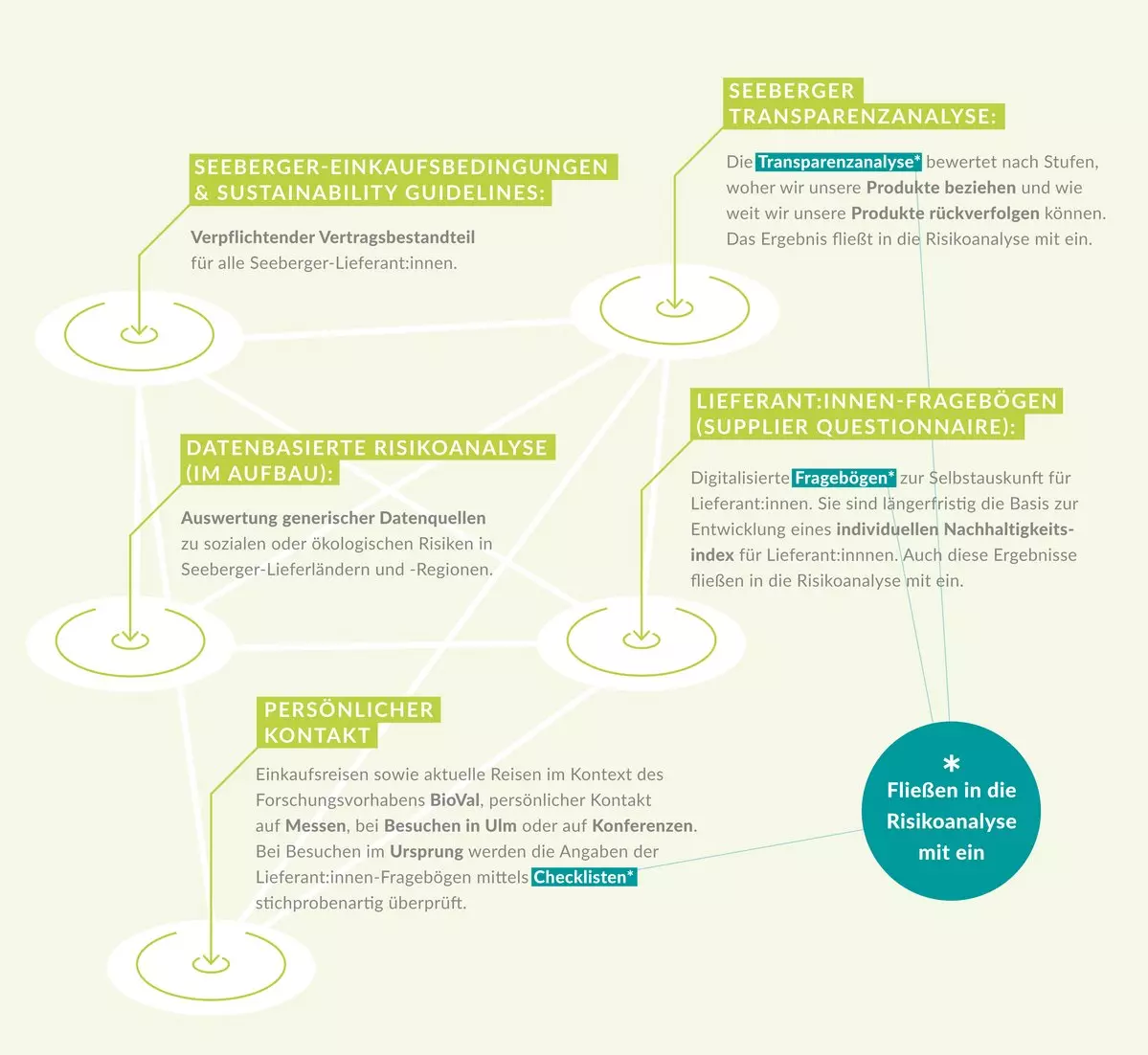
For the past year, we have been actively participating in the “BioVal” research project as a so-called “real laboratory”. For us, the central question is how we can promote and support biodiversity in the countries of origin of our natural products.
Seeberger supplier:inside monitoring contains various modules:

One module that we have used so far to gather information on biodiversity is our supplier questionnaire. In addition to social issues, this also includes ecological aspects (such as the use of pesticides). In preparation for the Supply Chain Due Diligence Act (LkSG ), we developed this questionnaire further as a first step. It was supplemented by other biodiversity-related topics such as the use of so-called structural elements* and measures to increase biodiversity. In the next step, the Seeberger concept envisages entering into dialog with the suppliers. The aim here is to discuss the information collected in the questionnaire in order to take appropriate measures to improve biodiversity where necessary.
A trip to Portugal took place in October as part of the research project. Our sustainability officer and our experienced purchaser were accompanied by researchers from the ZNU (Center for Sustainable Leadership). Here we had the valuable opportunity to talk to farmers who have planted their land with biodiversity in mind. The aim of the trip was to evaluate the biodiversity measures on site and to determine the possible influence of Seeberger on these measures.
The central tool for this was our supplier questionnaire, which we further optimized in line with the LkSG. We wanted to know how the individual questions are understood by the farmers and whether the answers are sufficient for an assessment of biodiversity.
Following the valuable exchange with the local farmers, two topics can be identified as interim progress:
- Dialogue and mutual understanding
- Establishing core facts is important.
- A questionnaire alone cannot provide meaningful information.
- Dialogue is the key to success when it comes to understanding the other person’s perspective, their motivation, the background to their actions and the challenges they face.
- Away from static recording and towards dynamic exchange.
We are very pleased that the Seeberger concept is proving to be a functioning tool for the most part. As always, we also pick up valuable optimization points from this trip.
Because we know that the journey is the reward.
For more information about our participation in the “BioVal” research project, please click here:
Participation in the BioVal l Seeberger GmbH research project
Why do we see the Supply Chain Duty of Care Act as an opportunity and have voluntarily drawn up a concept to meet its requirements? The answers can be found here:
Seeberger concept for the Supply Chain Duty of Care Act (LksG) l Seeberger GmbH
